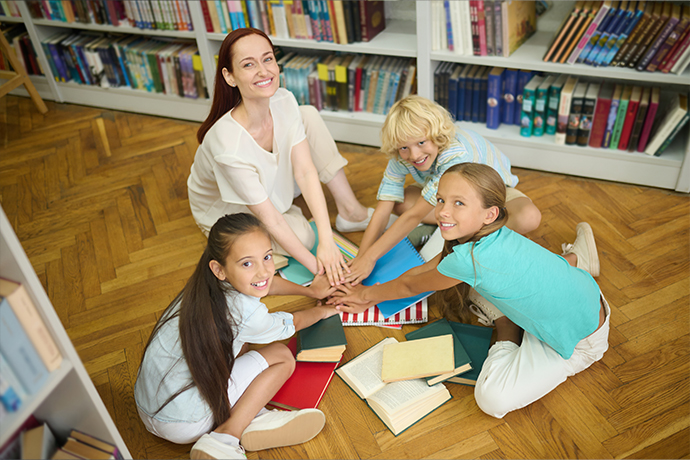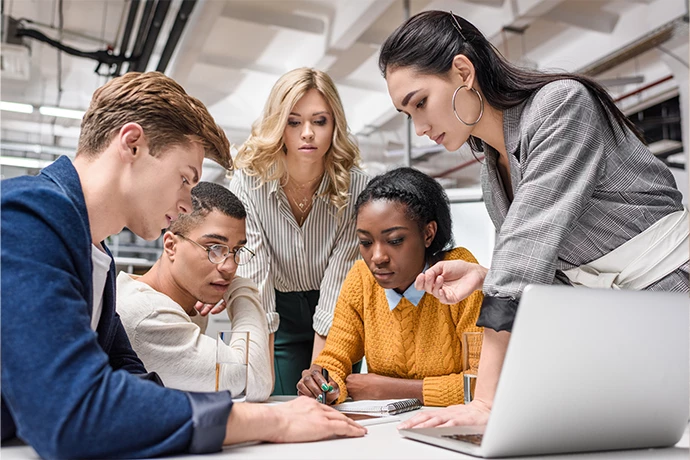 SPEAKERS
SPEAKERS
 TOPICS
TOPICS
In education, teamwork plays a vital role in fostering academic proficiency and essential life skills. This article explores the importance of teamwork in the education process and its impact on the future success of learners.

In education, where knowledge and skill development are at the top of goals, the principle of teamwork serves a huge role. Collaborative learning from classrooms to extracurricular activities not only develops academic proficiency but also the crucial life skills needed for success. This article looks into the need for teamwork in the education process as well as its impact on the result of the future of learners.
What is teamwork in education? Teamwork within the educational context is a term that outlines the collective actions of people, which include students, teachers, administrators, and parents cooperating towards the accomplishment of educational objectives. It entails sharing information, working collaboratively, and coordinating activities among students to succeed academically and realize their full potential.

You may be asking, “Why is teamwork important in education?” Read on to discover why teamwork and collaboration play an important role in a learning environment.
Effective teamwork in education is the basis for active and consistent learner engagement with their classmates. Students' different opinions and strengths are enhanced through activities like group discussions, projects, and other types of tasks. There, students practice problem solving, and critical thinking and develop in these areas. This hands-on learning method bolsters the learning process and builds a deep understanding of the subject.
Collaborative learning environments that encourage students to interact with each other, form ties, and develop important social skills, including communication, empathy, and conflict resolution, present a great basis for student success. Students will be taught to work in partnership, make space for diversity, cooperate efficiently, and participate in the functioning of the group actively.
Today, technological advancements have blurred national borders and made teamwork an invaluable skill. Teamwork cooperation in education teaches students how to work with people when they assume tasks in which collaboration plays a crucial role in success. Students can master teamwork in their respective disciplines, flexibility in different environments, and solving communal problems by participating in group projects and team activities.
Teamwork provides the students with situations where they demonstrate leadership competence, delegate tasks and encourage their mates. Through this process, students learn to use and strengthen their personal leadership skills like problem-solving, sharing responsibilities, and communication and confidently take charge in various academic and other settings.
Education fosters teamwork, which recognizes diversity and incorporates everyone, leading to the creation of a learning environment that is inclusive, where respect and value for every student are given equally. Having fellow students who are different as far as their culture, race and opinions, students can understand diversity and accept new ideas, challenge stereotypes and find themselves with empathy and respect for others.
Introducing teamwork in education is necessary as it is the key aspect for developing a collaborative learning atmosphere between students that helps prepare them for success in both academic and real-world situations. Here are some effective strategies for integrating teamwork into educational practices:
The integration of these approaches into the teaching process can help teachers design distinct educational activities that develop the students’ communication skills, teamwork, and critical thinking. Through collaboration, educators can foster student creativity and inculcate their involvement in the learning process.
Although collaborative learning bears a few challenges, such as managing the group dynamics, balancing the schedules, and promoting equal participation, providing solutions to these problems would help to take the most from collaborative learning. Educators can do that by helping students build environments that are welcoming, fostering effective communication, and giving out tips on how to resolve conflicts. In that way, the students can manage the challenges within them and benefit from collaborative learning opportunities. Collaboration and teamwork are the key success factors for students in their coursework and their future beyond school.
